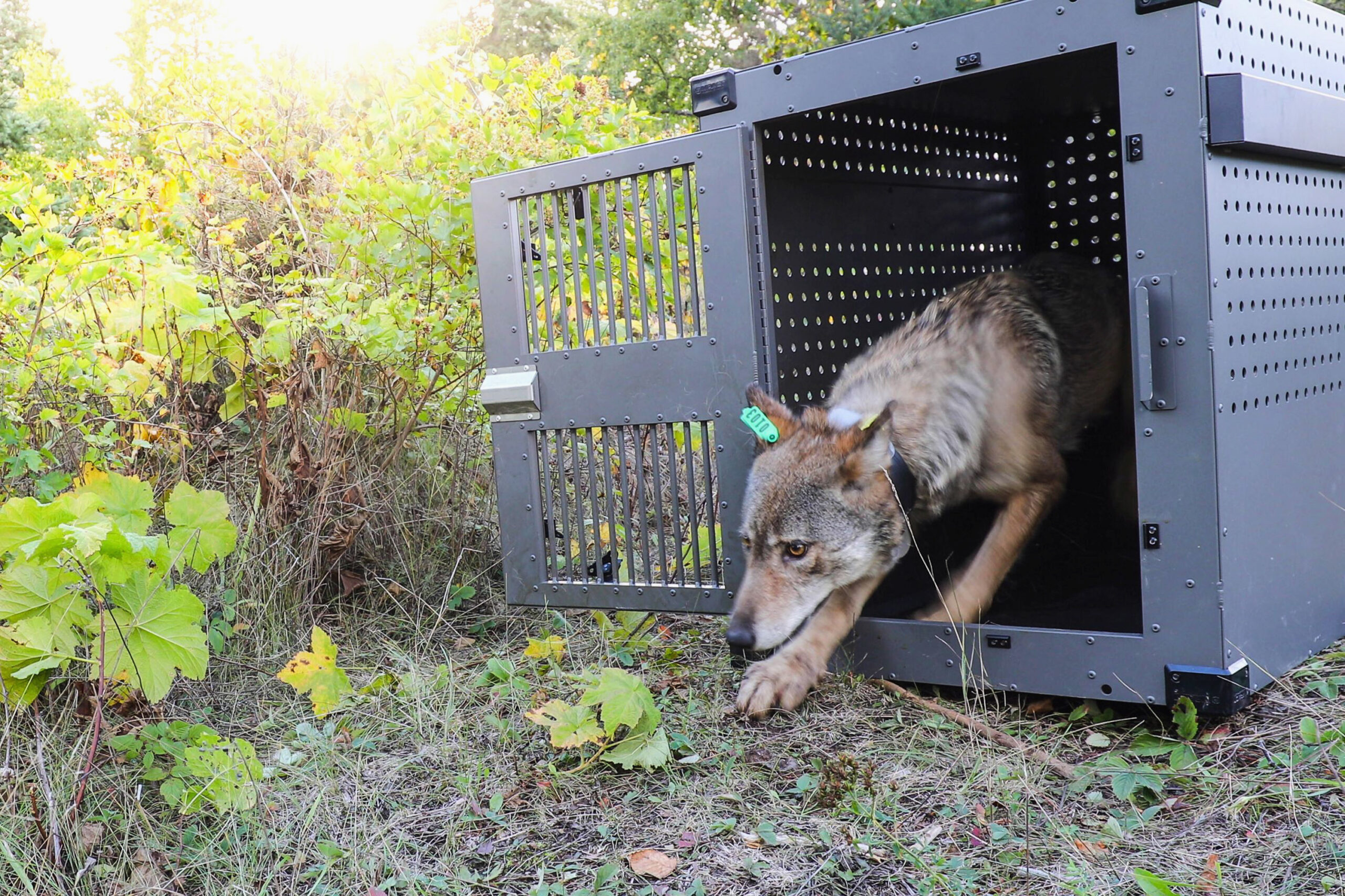COMMENTARY BY DR. DAVE SAMUEL
On the surface, it seems rather simple: Wolves eat moose and the more moose, the more wolves. That same model should work for coyotes and deer, rabbits and great-horned owls, etc. Turns out it’s just not that simple.
Isle Royale is a 207-square mile isolated island in Lake Superior. For decades, it has been home to wolves and moose, and a research study began there in 1958. So began the longest predator-prey study in the world. Actually, if you are trying to assess the impact of a predator on a prey species, you need years of data. A one-year snapshot just doesn’t tell you much about the relationship between a predator and its prey species. In this case, we have an island with wolves and moose, so collecting data there was a no-brainer. The results of this study have been interesting and have given biologists some perspective on just how complicated predator-prey relationships are.
When wolves were introduced into the Yellowstone ecosystem out west, hunters howled, claiming the wolves would devastate elk herds. Indeed in some areas, elk populations have plummeted, and the wolves were a part of that decline, but ecological relationships, weather and other factors were also involved. To get perspective on all this, let’s review the history of the relationship of wolves and moose on Isle Royale.
Wolves and moose have been on Isle Royale throughout the 1900s, with wolf numbers going as high as 50 and moose numbers ranging from 500-2,500. Wolf numbers fluctuated as moose numbers fluctuated. In fact, wolf predation capped moose density, with moose numbers peaking in the early 1970s. Moose numbers then fell drastically caused by wolf predation and an extremely bad winter in 1977. For those that can remember, we had a nasty winter that same year here in Morgantown.
As the moose numbers dropped, so did the wolves, and by 1980, there were only 14 wolves on the island. There were several reasons for the decline. A visitor’s dog brought a canine parvovirus to the island and that disease killed a lot of wolves. Inbreeding was also believed to have affected wolf reproduction. In addition, the once common ice bridges that connected the island to the mainland around 50 days each winter were disappearing because of warmer weather. This restricted movement of wolves to the island, thus there was little “replenishment” of wolf numbers.
The wolf crash led to a boom in moose numbers and this then led to over-browsing of trees. In fact, one could follow the rise and fall of wolves and moose on the island by looking at the annual growth rings of balsam fir trees. More moose and less growth of the fir.
Remember in the first paragraph I noted these predator-prey relationships were not straight forward. There’s a lot going on. When the balsam fir growth is curtailed there is less leaf litter on the ground and this then influences nutrient cycling in the soil. That same change is happening in Yellowstone where wolves kill elk, and less elk browsing impacts vegetation growth, leaf litter and soil nutrients. And in both Isle Royale and Yellowstone, leaf litter and soil nutrients impact insects on the ground and that impacts feeding on insects by birds, and on and on. When the vegetation was over-browsed combined with bad weather, moose numbers dropped and over the years the wolf numbers fell until only two wolves remained; a male and a female. At the same time, moose numbers rose to 1,500 by 2018. Two wolves could not keep moose numbers in check, so the National Park Service decided to bring in wolves from the outside. Beginning in 2018, wolves were introduced, and within a year, there were eight males and seven females on the island. Wolves are territorial and definitely kill each other, and the lone male leftover before the re-introductions was found dead, believed killed by the introduced wolves.
One question was, are the introduced wolves eating moose. A study of the reintroduced wolf diets showed that half their diet was moose (and 63% of those were calves). The other half of their diet was beaver and snowshoe hares.
How about another example? Here’s a quote on predators and prey from the June issue of Science showing how things are connected:
“The removal of wolves from the midwestern and eastern U.S. was likely instrumental in the spread of coyotes into these regions, which in turn depleted fox populations. This led to an increase in small-mammal populations, an associated increase in tick abundance, and the rise of Lyme disease risk.”
When you have wolves, coyotes leave. When you have coyotes, red fox numbers go down. When you lose red foxes, small mammal populations rise. When you have lots of small mammals you get more ticks. When you have lots of ticks, Lyme disease increases in humans and dogs. It’s a bit of oversimplification, but in general this is what happens.
It will be interesting to continue to follow moose and wolf numbers on Isle Royale. Ecosystems are intertwined and on Isle Royale, the long-term study, that is now over 60 years running, shows that the predator-prey cycle there is indeed very complicated. The latest research allows them to see what happens when you add predators. The goal is to get the wolf numbers up to 30 to better balance the ecosystems on the island.
What they are learning on Isle Royale is what they found after wolves were brought to Yellowstone. Restoring wolves on Isle Royale is helping to restore the integrity of the ecosystem.
Dr. Samuel is a retired wildlife professor from West Virginia University. His outdoor columns have appeared, and continue to appear, in Bowhunter magazine and the Whitetail Journal. If you have questions or comments on wildlife and conservation issues, email him at drdave4@comcast.net.




